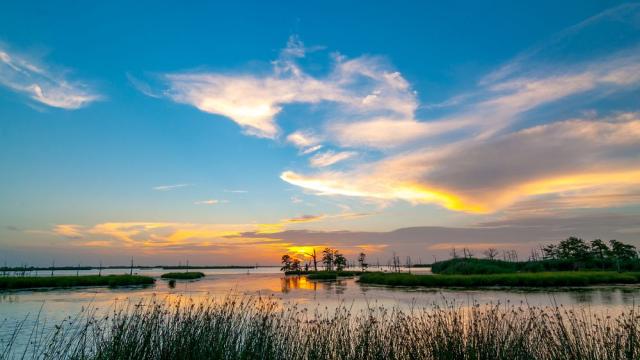Global warming is pushing man into a corner and sea level rise is destroying the habitats of those who reside in coastal areas. One of these is the Mississippi River Delta in Louisiana. It has witnessed loss of more than 5,000 square miles of land. The reason is gradual sinking into the Gulf of Mexico over a period of nearly 80 years. NASA has taken this up in its agenda. It will be setting up a new research project to study the effects this phenomenon and has identified it as Delta-X. The work would involve collecting the required data in two phases.
The first one would begin in April and the second one in the fall and the exercise would cover two locations. These are Atchafalaya Basin, a wildlife refuge, and Terrebonne Bay situated off the New Orleans coast.
By air ✈️ and by boat 🚢 Delta-X, @NASA's new #EarthExpedition, is preparing to embark on its first field campaign in the Mississippi River Delta. The mission looks to help scientists better understand why some parts of the delta are disappearing: https://t.co/jb8nogPCPB pic.twitter.com/bq5i4A1w2U
— NASA Earth (@NASAEarth) February 20, 2020
Daily Mail UK quotes Simard of Jet Propulsion Laboratory as saying – “Millions of people live on, and live from services provided by, coastal deltas like the Mississippi River Delta.” However, this has resulted in loss of land in many major deltas in the world.
Some of them no longer exist. The task of NASA is to assess the vulnerability and take a call on areas that could be lost forever and areas that could survive. Incidentally, Indonesia is drawing up plans to relocate its capital Jakarta because of sea level rise.
NASA will measure rise in sea level
The Mississippi River Delta is one of the largest wetlands in the United States, and is the area where the Mississippi River flows into the Gulf of Mexico. Delta is a natural formation that might have taken hundreds of years to form. It consists of silt and sediment that flows downstream to gradually settle down in the riverbed. This form of landmass is a delta and, over a period if time, it transforms into an ecosystem consisting of plant and animal life.
Moreover, a landmass of this nature at the mouth of a river can act as a shield to protect the inland areas by deflecting strong ocean winds.
Louisiana is not alone in facing climate change, but Louisiana has a tool in this fight that other regions do not: The Mississippi and Atchafalaya Rivers. https://t.co/DuLzizL0Jc #OurCoast
— Restore the Delta (@RestoreDelta) February 20, 2020
Daily Mail UK describes the situation as grim. NASA has assessed the extent of loss of land since the 1930s. It believes the sea level rise is emerging as a threat to surrounding areas. The project of NASA was visualized in 2015 and is taking shape now. The team is set to launch the study. It will be an exhaustive one and involve aerial study, study by boat and physical study by teams on foot.
Sea level rise and finding answers
According to Xinhuanet, NASA has to collect data by every possible means to find answers to questions that are worrying those who matter. These pertain to increase in sea level and its effects on the Mississippi River Delta. It seems some portions of the delta are disappearing but not other parts. The official handling the project has a tough task on hand. Any delta is basically the first line of defense against rising sea levels, and are habitats to many species of plants and wildlife. This particular delta is one of the largest in the world. It is responsible for both local and national economies. This is because of industries like shipping, fishing and tourism.
These attract investments but rising seas might take its toll because loss of land has an adverse effect.
Melting glaciers lead to rise in sea level
In the world of today, it is difficult to ignore global warming. Irregular rainfall has become the norm. It gives rise to droughts when the rainfall is scanty with possibilities of bushfires. On the other hand, there are floods when it pours. Both are equally unwanted but Climate change dictates the scenario. Global warming leads to melting of glaciers, which, in turn, raises the level of seas and poses dangers to those who live in coastal regions. New York plans to have a seawall to protect it from sea level rise. Climate activists like Greta Thunberg are trying to raise awareness on the subject. It is important that the world dissociate itself from fossil fuels and embrace renewable energy.
![How does sea level rise increase flooding in Mississippi? [Image source/SeaLevlRise.org YouTube video] How does sea level rise increase flooding in Mississippi? [Image source/SeaLevlRise.org YouTube video]](https://staticr1.blastingcdn.com/media/photogallery/2020/2/21/660x290/b_502x220x82/how-does-sea-level-rise-increase-flooding-in-mississippi-image-sourcesealevlriseorg-youtube-video_2405249.jpg)



